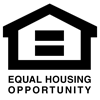Planned unit development (PUD)
What is Planned unit development (PUD)?
Planned Unit Development (PUD) refers to a comprehensive development strategy for large tracts of land that integrates various types of residential, commercial, and recreational spaces. A PUD is designed to create a cohesive community where residents can live, work, and play in close proximity. These developments can include single-family homes, townhouses, apartments, retail shops, schools, parks, and other facilities, all managed under a unified plan. The primary goal of a PUD is to provide a sustainable, functional, and aesthetically pleasing environment that promotes a high quality of life for its residents.
Key Features of Planned Unit Developments:
- Mixed-Use Development: PUDs often blend residential, commercial, and recreational elements, allowing for a diverse community where residents can access essential services and leisure activities without needing to travel far.
- Common Areas: These developments typically feature shared spaces such as parks, playgrounds, and community centers that are reserved for use by the residents of the PUD.
- Flexible Zoning: PUDs often benefit from flexible zoning regulations that allow developers to create innovative layouts and designs that may not conform to traditional zoning laws.
- Enhanced Amenities: Many PUDs include amenities such as swimming pools, fitness centers, walking trails, and clubhouses to promote community engagement and enhance residents' lifestyle.
- Community Governance: Residents in a PUD often have a say in the management of the community through homeowners' associations (HOAs), which oversee maintenance and enforce community standards.
Real Estate Relevance:
Planned Unit Developments play a significant role in today's real estate market for several reasons:
- Attracting Buyers: The appeal of a PUD lies in its ability to offer a lifestyle rather than just a home. Many buyers are drawn to the convenience and community aspects of these developments, making them desirable options in competitive real estate markets.
- Investment Opportunities: Investors often see PUDs as attractive opportunities due to their potential for appreciation in value. The mixed-use nature of these developments can lead to increased foot traffic and business opportunities, enhancing property values.
- Community Development: PUDs contribute to urban planning by creating cohesive neighborhoods that foster social interactions and connectivity, which is increasingly important as cities grow and change.
- Environmental Sustainability: Many PUDs are designed with sustainability in mind, incorporating green spaces and environmentally friendly building practices that appeal to eco-conscious buyers.
- Accessible Amenities: The inclusion of amenities within walking distance increases the attractiveness of PUDs, especially for families and retirees looking for convenience and community.
Real Estate Examples:
Consider a PUD that includes a mix of single-family homes, townhouses, and a small shopping center. This community might feature parks and walking trails that connect the residential areas to the shopping district. For instance, a family living in one of the townhouses can easily walk to the local grocery store, while children can safely ride their bikes to the nearby park. This convenience enhances the overall living experience and encourages community interaction.
Another example could be a PUD designed around sustainable living. This development may have energy-efficient homes, community gardens, and a shared solar energy system that reduces utility costs for residents. The integration of eco-friendly design not only attracts environmentally conscious buyers but also enhances property values due to the growing demand for sustainable living solutions.
Important Considerations for Buyers:
- HOA Fees: Many PUDs have homeowners' associations that charge monthly or annual fees for the maintenance of common areas and amenities. Potential buyers should factor these costs into their budget.
- Community Regulations: PUDs often come with specific rules and regulations that homeowners must adhere to, such as architectural guidelines or restrictions on renting properties. It is essential to understand these regulations before purchasing.
- Future Development: Buyers should inquire about any planned future development within the PUD or surrounding areas, as this could impact property values and the community's overall character.
- Market Trends: Researching local real estate trends can help buyers determine if a PUD is a good investment. Understanding the demand for mixed-use developments in the area is crucial.
In conclusion, Planned Unit Developments represent a forward-thinking approach to community design in real estate. By integrating residential, commercial, and recreational spaces, PUDs create vibrant and sustainable communities that cater to a diverse range of lifestyles. Whether you are a homebuyer, an investor, or someone interested in community planning, understanding the benefits and features of PUDs can significantly enhance your real estate strategy and decisions.





